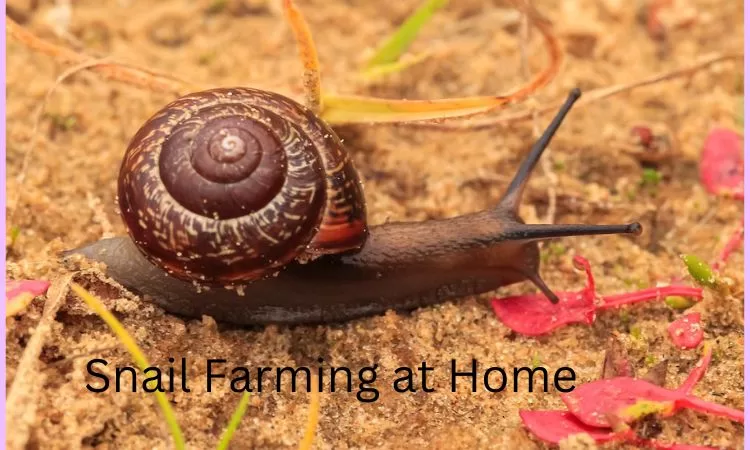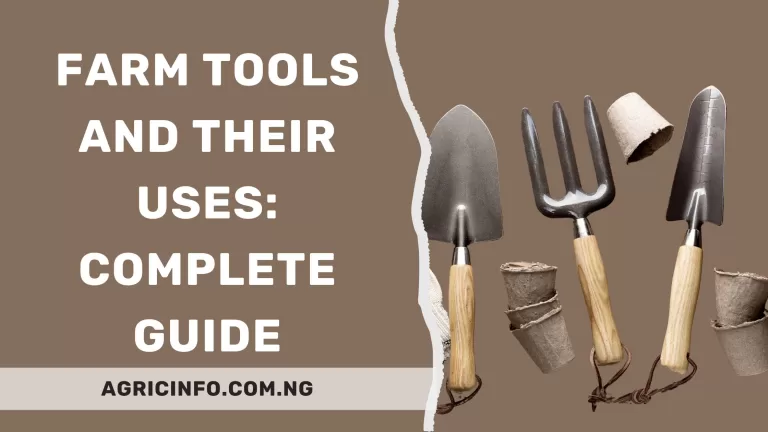How to Start Snail Farming at Home
Snail farming is an intriguing economic venture with nearly 100% profitability. It also has limited competition in Africa and little investment needs. Snails are regarded as a pleasant, healthful, and exotic delicacy in many other nations, including Kenya, Nigeria, and South Africa, which is why the snail farming industry has been gaining popularity rapidly in recent years. In this post you will learn how to start Snail Farming at Home.
Establishing a profitable business can also be accomplished by starting snail farming at home. So, are you an enthusiast for raising snails or a novice farmer? Do you want to start a small-scale farming business or keep a tiny snail farm in your home where you can raise snails for your family’s consumption? This article is for you if your answers to these questions are yes. We will provide comprehensive answers on how to start snail farming at home with other important information. Stay glued.
What is Snail Farming?
Snail farming, often referred to as Heli culture, is the practice of breeding or rearing edible land snails for human eating or traditional uses. Snail farms can be found outside, indoors in climate-controlled structures, or inside enclosed structures like “greenhouses” or plastic tunnel homes. Furthermore, snails can reproduce indoors in a regulated setting, hatch inside, and then grow out in outdoor enclosures.
Why Should I Start Snail Farming at Home?
Starting snail farming is one of the commendable agricultural practices. Aside from the profitability of starting snail farming at home, there are many reasons to venture into it but below are four main reasons to venture into snail farming.
- Low Maintenance
- Snails are Nutritional.
- Environmental Friendliness
- Profitability
1. Low Maintenance
One of the reasons you should start snail farming at home is because snails are known for being low-maintenance animals. It is very simplified and easy to run. You are expected to build a very large house, instead, simple housing is acceptable. Secondly, their diet consists of common fruits and vegetables, and it requires little or no manpower or labour.
Unlike other agricultural practices which require much attention, snail farming needs little attention which allows part-time farmers to combine or incorporate it with other farming practices. It doesn’t require large land space as well, thereby making it affordable for snail farmers. So, with low capital, you can start snail farming at home.
2. Snails are Nutritional
Apart from low management in snail farming, snails also have nutritional benefits. Snails are a good source of protein, essential amino acids, and minerals such as iron and calcium. It contains vitamin A, iron, and magnesium and has very low fat.
Their meat is low in fat and cholesterol, making it a healthy option for those conscious of their diet. Snail meat also contains arginine, which dilates and relaxes arteries, supports a healthy kidney system, aids in wound healing, and helps maintain hormone and immune system function. When it comes to snail shells, they can be used as calcium for animal feed. Snails generally are highly medicinal and used for health-related products.
3. Environmental Friendliness
Snails are one of the most harmless creatures on earth. Snail farming doesn’t pose a nuisance to the environment. Droppings from snails have no smell. This is not at all like what you would find at a poultry or pig farm. Snails can be raised in or near inhabited areas.
Unlike traditional livestock, snails produce minimal waste and do not contribute significantly to greenhouse gas emissions. Their farming practices are less resource-intensive, making it a sustainable option.
4. Profitability
Another beneficial reason to start snail farming at home is because it is intensively profitable. The demand for snails has been increasing in the culinary industry due to their unique taste and nutritional benefits. As a result, starting a small-scale snail farming business can be profitable.
Local markets, restaurants, and health-conscious consumers may be potential customers. Since snails have quick growth, producing over 300 eggs at once, you will earn income in that business.
How Do I Set Up an Outdoor Snailery?
The soil is the most crucial component of a snail’s environment. The kind of soil that supports the cultivation of leafy greens, tomatoes, and carrots needs to be wet and high in organic matter to support the growth and development of these plants.
- The soil must be loose enough for mature snails to burrow readily to lay their eggs and hibernate during the dry season. The ground must first be cleared of weeds, shrubs, and twigs.
- Till the soil by hand to break up the grains and create a texture that is suitable for snails.
- Make a paddock for veggies and other plants that grow on land.
- Create a netting or fine-mesh enclosure to enclose the paddock. Keep in mind that snails can slip by undetected.
- In the paddock, plant dwarf pawpaw plants, bananas, legumes, leafy greens, and cocoyams, then wait for them to flourish.
- Make sure to water the paddock regularly and introduce your breeders to the enclosure. The snails will be able to find food and shelter from it.
- Pests like crawling insects and other predators pose the biggest threat to snails, particularly in tropical areas where snails are usually raised. Create a gutter around the housing and fill it with water and insecticide to keep them out of the enclosure.
How To Plant Watermelon Successfully In Nigeria
How to Start Snail Farming at Home
How to start snail farming at home may sound difficult but it is very simple.
Below is the step-by-step guide on how you can start.
- Select Snail Species
- Secure a Space
- Buy your Snails
- Feed your Snails
- Harvest and Sell
1. Select Snail Species
Snails are of different species such as giant African land snails, Roman Snails, Mediterranean Green Snails, White Garden Snails, and many others. You must research the species of snail you would like to breed. According to research, Achatina achatina is the best snail species for warm climate regions like Africa.
2. Secure a Space
The next step to follow when starting snail farming at home is to secure a space where you can build a small habitat for your snails. Enough room must exist in your snail habitat for your snails to go about freely. It is best to avoid overcrowding your snails as this will hinder the snails’ growth. You should try to build housing that is escape-proof to allow your snails to feel comfortable.
3. Buy your Snails
Buying your snails is the next step after securing a comfortable habitat for your snails. Purchase some high-quality, fresh snails from any farm or store. To ensure the snails are healthy, it’s important to be able to inspect them before purchasing. Ensure that you purchase healthy, mature snails that can lay eggs and contribute to the population of your farm when you initially establish your snail farm. Examine the snail’s shell. They are a fully grown snail if they have a lip.
4. Feed your Snails

Feeding your snail is very important if you want them to be healthy and live long. Being vegetarians, snails may eat a broad range of foods, including lettuce, cassava, okra leaves, cabbage, cucumbers, mangoes, bananas, eggplants, pear, tomatoes, and paw-paws. But you can also feed snails paw paw, pineapple, or banana.
5. Harvest and Sell
Snails must reach maturity before being harvested; it is not financially prudent to harvest them before then. To sell in the market, don’t gather all the mature snails at once. A small number should be retained for breeding purposes and to act as basic stock for your snail farm.
Snail has a favorable price and market demand. Snails are easily sold in the neighborhood market. Worldwide, the rate at which people are ingesting snail meat is rising quickly. Therefore, exporting to foreign markets can increase your income.
What can I Feed my Snails with?
The following are what you can feed your snails with.
Fruits
- Papayas
- Mango
- Figs
- Bananas
- Strawberries
- Pears
- Eggplants
- Oil palm
- Watermelons
- Cucumbers
- Tomatoes, etc
Leaves
- Okra
- Lettuce
- Cassava plant
- Cocoyam
- Papaya
- Loofa
- Cabbage, etc.
Household Peels
- Yams
- Carrots
- Pineapple
- Bananas
- Pawpaws, etc.
- yams, plantains, carrots, and pineapples.
Salt-free Food Leftovers
- Peas
- Rice
- Beans, etc.
Tubers
- Yams
- Carrots
- Cocoyams
- Potatoes, etc.
Supplementary vitamins and minerals that consist of small amounts of vitamins D, E, and K. Sources include the following:
- Copra cake
- Cabbage
- Spinach
- Sunflower
- Wheat germ
- Lettuce, etc.
Powdered Calcium
- Wood ash
- Crushed oyster
- Eggshells
- Ground limestone,
- Bone meal, etc. They should also be added to the snail feed to help them develop early.
If you want to provide mineral sources to your snail, place licking stones containing the essential minerals into the pen.
wrap up
Venturing into snail farming at home can be a rewarding and sustainable endeavor. By following the steps outlined in this guide, you can create a conducive environment for snails to thrive. From selecting the right species to providing proper housing and nutrition, each element contributes to a successful snail farm.
Remember, patience is key in this process, as snails take time to grow and reproduce. With dedication and knowledge, you can turn your home into a flourishing snail farm, enjoying the benefits of this unique and eco-friendly agricultural pursuit.








